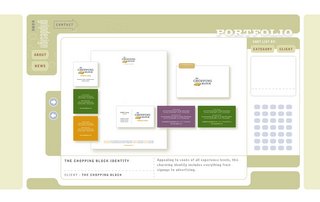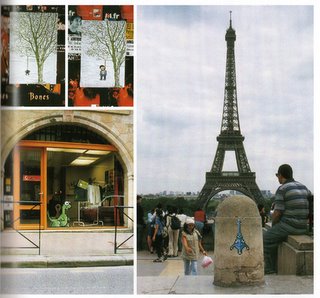[no. 008] passage of time
In my own work, for some unaccounted unconscious reason, I usually do not show a passage of time. I usually just have an absolute point and time that I am trying to convey to the viewer. This point became more apparent to me as I was looking at some works that do in fact show a progression in the work through time.

Scrolls are a part of traditional Chinese culture which unroll to reveal a story, history, or painting. With the invention of books, scrolls seem to have been phased out for a more practical solution. However, designer Alan Chan used the scroll technique to produce his “retrospective exhibition, ‘Alan Chan: The Art of Living’ at the Hong Kong Heritage Museum.” In his scroll, Chan shows his life works- “a paper brain full of thoughts, art, ideas, and memories.” When we were working on our Haiku books at the end of last semester with Lee, we were told to think about the pacing of our books, allow the narrative to reveal itself throughout the pages. In a project such as this, pacing is a very important design consideration. Since this scroll is 34.5 meters long, there is no way to present all the information at once, Chan had to select the images and type that would flow smoothly as one unrolled the scroll. There is a lovely and gradual process that we see in this scroll. Contemporary design placed in a format that harks back to a traditional art.

Jae-Hyouk Sung and Matthew Normand designed a series of posters for the California Institute of Arts for its Lecture Series. However, the two designers were not given a complete list of the lecturers they were expecting. In order to work around this hurdle, Jae-Hyouk and Matt decided that they would print X-amount of posters and then each new lecturer’s information would be silk screen printed over the poster for the previous one. The designers linked the choice of type and subsequent cross-out elements to each layer of silk screening in order to bring forth all the information pertinent to that layer. For instance, the “series 3” poster has X marks that are used to cross out the information from “series 2.” There is an interesting quality to the density of each subsequent poster, there is obviously more physical ink that is put down, but in addition, it creates a pattern and added complexity to each piece as if each series is building toward a climax. In addition to carefully considering the type, color, and compositional choices, the designers considered the orientation of each as the lecture series progressed. “The posters shift between a vertical and horizontal format in a clockwise direction to indicate time.” I found this to be a thoughtful aspect of the whole series of posters that is just what it needed to be a cohesive set.










